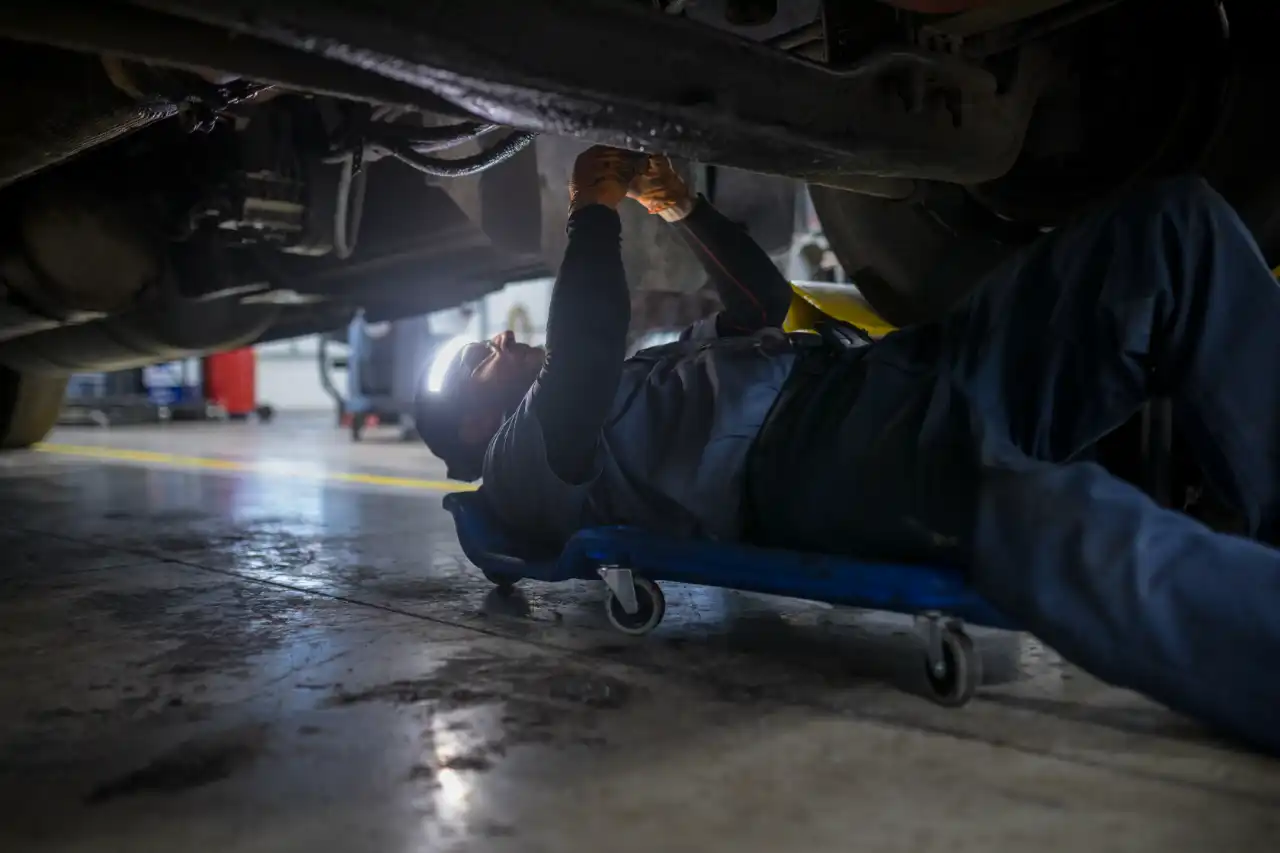
Keeping heavy equipment running efficiently and effectively is critical to any operation reliant on heavy-duty machinery. This article delves into proactive repair and maintenance, highlighting its pivotal role in maximizing uptime. Proactive maintenance isn't just about fixing what's broken; it's a strategic approach to prevent breakdowns before they occur. Companies can significantly reduce downtime through regular inspections, scheduled servicing, and avoiding potential issues, enhancing productivity and profitability. This guide offers insights and strategies for implementing a successful proactive maintenance program, ensuring your heavy equipment is always ready to perform at its best.
Understanding the Impact of Downtime
Downtime in heavy equipment operations can be a costly affair, both financially and operationally. When machinery breaks down unexpectedly, the immediate costs include repairs and parts replacement. However, the hidden costs are often more significant. These include lost productivity, delays in project timelines, and the potential for missed deadlines, which can lead to contractual penalties. In industries where heavy equipment plays a crucial role, such as construction, mining, and logistics, downtime can disrupt the entire workflow, affecting not just the specific machine but the entire operation.
Proactive maintenance directly addresses these costs. By anticipating and preventing equipment failures, companies can avoid the unplanned work stoppages that lead to these losses. Regular maintenance schedules and predictive maintenance techniques can significantly reduce the frequency and severity of equipment breakdowns. This approach not only saves on immediate repair costs but also contributes to long-term financial savings by extending the lifespan of the equipment and maintaining its resale value.
Essentials of Proactive Maintenance
Proactive maintenance is rooted in a systematic approach to equipment care. It starts with regular inspections, where equipment is thoroughly checked for signs of wear, potential failures, or any need for adjustments. These inspections should be comprehensive and cover all aspects of the machinery, including engines, hydraulic systems, electrical systems, and any moving parts.
Scheduled servicing is another critical component. This involves performing regular maintenance activities, as the equipment manufacturer recommends. These activities include oil changes, filter replacements, lubrication, and adjustments to ensure optimal performance. Adhering to a strict service schedule is crucial in preventing breakdowns and extending the life of the equipment.
Predictive maintenance takes this a step further by using data and technology to anticipate failures before they occur. This can involve monitoring equipment performance in real-time using sensors and analyzing this data to identify patterns or signs of impending failure. For example, vibration analysis can detect imbalances in rotating machinery, and thermal imaging can locate overheating components. By addressing these issues proactively, companies can prevent minor problems from escalating into significant failures.
Training staff is also an integral part of proactive maintenance. Operators and maintenance personnel should be well-versed in their equipment, understand how to operate it safely and efficiently, and recognize signs of potential problems. Additionally, maintaining detailed maintenance records is crucial for tracking the history of each piece of equipment, planning future maintenance activities, and making informed decisions about repairs and replacements.
The Role of Technology in Equipment Maintenance
Technology has become a game-changer in the maintenance of heavy equipment. Integrating Internet of Things (IoT) sensors and telematics into machinery has revolutionized maintenance. These technologies enable real-time equipment monitoring, providing valuable data on performance, usage, and potential issues.
IoT sensors can track various parameters, such as temperature, vibration, pressure, and fuel consumption. This data is invaluable for identifying trends that may indicate a problem, allowing for maintenance or repairs before a failure occurs. For instance, an increase in engine temperature could signal a cooling system issue, prompting preemptive action to avoid overheating and potential engine damage.
Telematics systems take this further by transmitting this data remotely, allowing for off-site monitoring and analysis. This can be particularly useful for fleet managers overseeing multiple pieces of equipment across different locations. They can receive alerts about potential issues, schedule maintenance, and even order parts without physically inspecting the equipment.
Predictive analytics is another critical aspect of technology-driven maintenance. By analyzing historical and real-time data, predictive models can forecast when a component will likely fail. This allows maintenance schedules to be adjusted based on equipment conditions rather than predetermined intervals. This prevents unexpected breakdowns and optimizes maintenance activities, ensuring they are conducted when necessary, saving time and resources.
Implementing a Successful Maintenance Plan
Implementing a successful maintenance plan for heavy equipment involves several key steps. First, it's essential to develop a comprehensive maintenance schedule based on the manufacturer's recommendations and the specific demands of your operation. This schedule should include regular inspections, service intervals, and predictive maintenance activities. It can also be combined with technology to enhance maintenance procedures.
Next, training your staff is critical. Operators and maintenance personnel should be knowledgeable about the equipment they work with. This includes understanding how to operate it safely and efficiently, recognizing signs of wear or potential problems, and performing basic maintenance tasks. Regular training sessions can keep skills up-to-date and ensure everyone knows the best practices in equipment care.
Maintaining detailed maintenance records is another vital aspect. These records should include dates of inspections, services performed, parts replaced, and any issues identified and addressed. This documentation provides a valuable history of each piece of equipment, helping to plan future maintenance activities and make informed decisions about repairs and replacements.
Finally, continuously reviewing and adjusting the maintenance plan is essential. As equipment ages or as your operation evolves, maintenance needs may change. Regularly reviewing the effectiveness of your maintenance plan and making adjustments as needed can ensure that it remains effective in keeping your equipment in top condition.
Book An Appointment Today!
Keep your heavy equipment running at peak performance with our expert radiator cleaning, repairs, and maintenance services. At K&L Auto and Diesel Repairs, we specialize in keeping your systems efficient, preventing overheating, and ensuring optimal operation. Contact us today to schedule a service and experience the difference that professional maintenance can make. Trust us to be your partner in maintaining your equipment's health and maximizing uptime.
Other Posts
